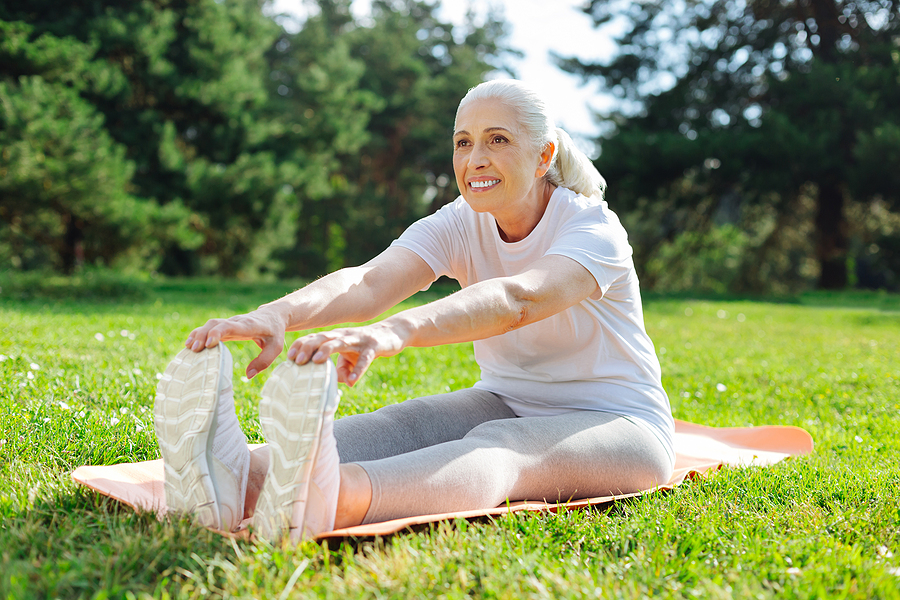Best exercises and stretches for your back
Many people sit for long periods of time each day, so it is important to know the issues sitting this can cause and how to minimise the risk of damaging your back.
A 21st-century problem
The way most of us live our lives these days does not do our back any favours. We spend far too long sitting, whether it be on our sofa watching TV, in our comfy chair reading, at our desk on a laptop, or even on the road, it’s not surprising that our bodies start to have problems.
It has been reported that 80% of people in the UK will encounter back pain at some point in their lives which is a direct consequence of many of us sitting for more than 7 hours a day.
Bad posture
Bad posture can develop if we spend too long sitting, whether it be at a desk, in the car or watching TV. Bad posture can result in weakened muscles which in turn may affect our spines.
Your general health
Did you realise that sitting for long periods not only affects the health of our back but can also increase the risk of developing other health problems such as heart attacks?
If you lead a sedentary lifestyle then you should take some exercise. It is recommended that we should get up and move, ideally every 30 minutes. It doesn’t have to be for long; just 1 to 2 minutes of short bursts of activity will help.
Here are a few ideas to help you spend less time sitting:
- set an alarm to go off every 30 minutes to remind you to get up
- walk for a few minutes every time you get up to make a tea or coffee
- ideally walk around while you’re on the phone or at least stand for a while
- try and watch less TV and opt for a more active downtime
How to help yourself
Here are some useful exercises to try, that can be done at home and are ideal for those who sit for long periods. These exercises are recommended to help with your posture and will strengthen vital muscles too.
The cat stretch is an exercise aimed to increase flexibility in the lower back by going from four-point kneeling to sitting on your heels. Be sure to stretch gently and slowly and remember to keep breathing normally.
The reverse backstretch or anterior pelvic tilt aims to help lower back pain by arching the back whilst kneeling on all fours. This stretch will also help move the pelvis. This is another movement that should be performed slowly and under control with normal breathing throughout.
The knee to chest exercise should be undertaken slowly and with control as it will actively stretch the muscles of your lower back
Stretching your back by bending from side to side is called the lumbar side-flexion. It should be performed slowly, with control and to the side only.
The lumbar extensions prone is an exercise that passively moves the lower back. First lie on your front then arch your back by gently using your arms to push you up. When you are stretched up breathe out then lower yourself down slowly.
Performing a hip roll is the lifting of your bottom and lower back off the ground by gradually pushing through your feet. Throughout the exercise, your lower back should neither be rounded nor arched. Inhale while you hold the position and try to stay stable.
Slowly rolling the knees from side to side, or lumbar rotation crook lying actively rotates the lower back.
Lumbar rotation crook lying video
The bird dog involves four-point kneeling while lifting your opposite arm and leg. This will help to give strength to your core, bottom and shoulder muscles. While performing the bird dog, your lower back should neither be rounded nor arched and there should be a straight line from your hand to shoulder and ankle to hip. Try and keep as stable as you can and breathe normally.
Giving strength to your core by lifting your hips and knees is the abdominal engagement exercise. Lie on your back and lightly pull your lower tummy in towards your spine to activate your core muscles while ensuring your lower back is neither rounded nor arched. Try and breathe normally, hold steady with your knees and hips at a 90-degree angle.
The dead bug exercise aims to help you strengthen lower back and core by lying on your back and alternately lifting your opposite arm and knee. You should first switch on your core muscles by gently pulling your lower tummy in towards your spine trying not to tilt your lower back but keeping it neutral. Breathe normally and hold the position.
Disclaimer
All content on Silversurfers.com is provided for general information only, and should not be treated at all as a substitute for the medical advice of your own doctor or any other health care professional. Silversurfers will not be responsible or liable for any diagnosis made by a user based on the content on www.silversurfers.com and we are also not liable for the content of any external websites or links from or to Silversurfers to any other websites. Please always consult your own doctor if you’re in any way concerned about any aspect of your health.
Melina - Assistant Editor
Latest posts by Melina - Assistant Editor (see all)
- Remembering the Big Freeze of 1963 - November 21, 2024
- Is your hot water bottle safe to use? Tips on what to look out for - November 20, 2024
- Tips on dealing with a frozen windscreen without using a spray de-icer - November 19, 2024
- 5 Homemade edible gifts in a jar - November 15, 2024
- The best of the Rolling Stones - October 22, 2024





















